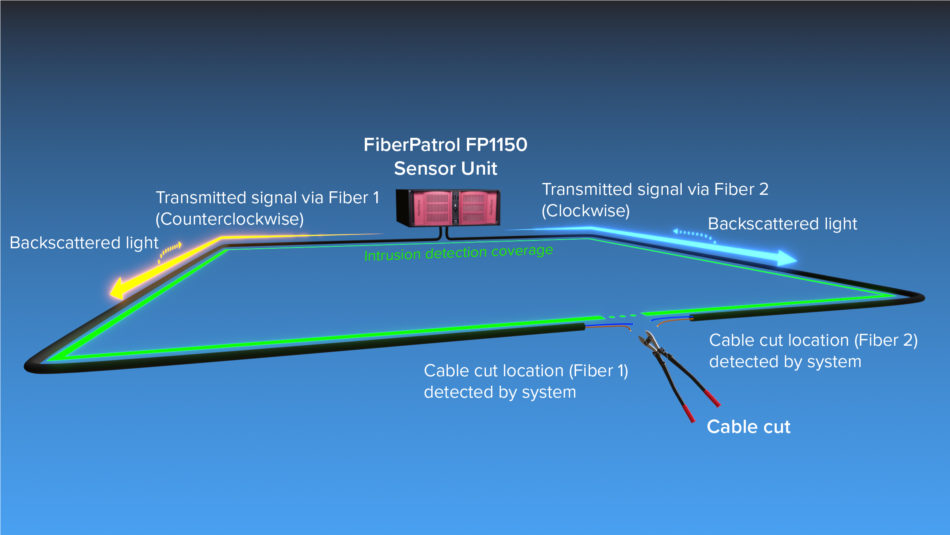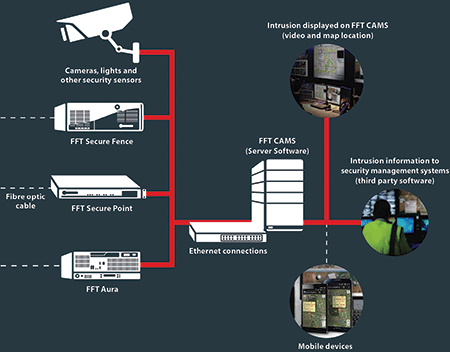Boost Your Safety And Security With Advanced Fiber Optic Protection Equipments
In an era where security is critical, sophisticated fiber optic safety and security systems present an engaging solution for improving safety and security throughout different settings. These systems not only boast premium bandwidth and speed for high-resolution security but also use impressive strength against outside disturbances. As organizations significantly look for dependable means to safeguard their possessions, the integration of ingenious modern technologies like AI and IoT within fiber optic structures increases crucial questions regarding their effectiveness contrasted to conventional systems. What implications do these improvements hold for future safety procedures?
Benefits of Fiber Optic Security
Utilizing the benefits of fiber optic modern technology substantially enhances protection systems across numerous applications. One of the key benefits is the raised data transfer ability, enabling the transmission of huge amounts of information at broadband. This is specifically vital for real-time video monitoring, where high-resolution feeds can be sent out without latency, making certain prompt reaction capabilities.
In addition, optical fiber display premium resistance to electromagnetic disturbance, which is vital in environments with potential signal disturbances. This integrity makes sure regular efficiency in important security operations. Fiber optic cable televisions are less prone to tapping and unapproved accessibility contrasted to conventional copper circuitry, therefore boosting data stability and discretion.
An additional remarkable benefit is the resilience of fiber optic systems; they are more immune to environmental elements such as dampness, temperature level fluctuations, and destructive substances. This durability converts to decrease maintenance expenses and longer life expectancies for security installments.
Finally, the light-weight nature of fiber optic cords helps with much easier installation and directing, particularly in intricate infrastructures (fiber optic security system). Eventually, the assimilation of fiber optic modern technology into safety systems not just bolsters protection steps yet likewise maximizes operational effectiveness
Trick Features to Think About
When evaluating fiber optic protection systems, numerous key features should be taken into consideration to ensure optimum efficiency and effectiveness. First, examine the system's detection variety and level of sensitivity; a substantial array enables keeping track of big locations, while high level of sensitivity ensures that even small disturbances are identified quickly.
Following, take into consideration the assimilation capabilities of the system. A fiber optic security system ought to perfectly interface with existing safety and security steps such as video cameras and alarms, producing a cohesive safety and security network.
Toughness and ecological resistance are likewise important functions. Guarantee that the system is developed to endure severe weather and possible physical threats, as this will certainly extend its operational lifespan.

Finally, check into the scalability of the system. A robust fiber optic safety system must be conveniently expanding to accommodate future requirements without substantial overhauls. By very carefully considering these functions, you can pick a fiber optic safety and security solution that boosts safety and safety in your environment.
Installation Process Review
To more tips here effectively implement a fiber optic safety system, a systematic installment process is necessary. This process starts with a thorough site analysis to determine the particular protection needs and to determine ideal areas for fiber optic cables and protection tools. Following this assessment, the setup group will certainly create a comprehensive strategy, including cable television paths, necessary tools, and compliance with regional policies.
Next, the setup entails laying the fiber optic cables, ensuring they are safeguarded from ecological elements and physical damage. Appropriate handling methods are critical, as fiber optic cables are sensitive and can be easily damaged. After the cabling is mounted, connectors and terminations are carefully completed to make certain signal integrity.
The succeeding stage consists of mounting safety devices such as cams, activity detectors, and security system, all integrated with the fiber optic network. Strenuous screening is performed to confirm that all parts are functioning appropriately and to guarantee optimal performance.

Comparing Fiber Optic to Traditional Solutions
The evolution of safety and security technology has actually resulted in considerable advancements in the contrast in between fiber optic systems and typical copper-based systems. Fiber optic systems use light to transmit information, offering remarkable transmission capacity and rate contrasted to their copper counterparts. This causes enhanced data transmission capacities, making fiber optics suitable for high-resolution video clip surveillance and real-time surveillance.
In addition, fiber optic wires are resistant to electro-magnetic interference, minimizing the likelihood of signal deterioration triggered by external factors. This particular ensures regular efficiency, also in challenging atmospheres. In comparison, conventional copper systems are extra susceptible to disturbance, causing possible vulnerabilities in security applications.
Resilience is one more benefit of try this fiber optic systems. They are less vulnerable to harm from environmental elements such as wetness and temperature changes, which can jeopardize copper wiring. Furthermore, fiber optics are lighter and thinner, allowing for simpler installation and reduced physical footprint.
However, typical systems often tend to have reduced initial prices, making them eye-catching for budget-conscious tasks. While fiber optic systems might require a greater in advance investment, their lasting benefits-- such as reduced upkeep costs and greater reliability-- often outweigh the initial cost, positioning them as a superior choice for contemporary safety needs.
Future Fads in Safety And Security Technology
Arising patterns in safety modern technology are positioned to transform the landscape of monitoring and hazard detection - fiber optic security system. As organizations significantly face sophisticated threats, technologies such as man-made knowledge (AI) and artificial intelligence (ML) are ending up being important to safety and security systems. These modern technologies improve the ability of fiber optic systems by allowing real-time data evaluation, recognizing abnormalities, and automating reactions to possible violations
In addition, the combination of the Net of Things (IoT) is revolutionizing safety frameworks. IoT devices can provide detailed situational awareness and assist in seamless communication between various safety elements. This interconnectedness allows for much more reliable surveillance and faster occurrence feedback times.
Biometric authentication is additionally getting energy, offering a higher level of site link security through special physical characteristics. As this technology develops, it is likely to be integrated into fiber optic systems for boosted access control.
Conclusion
In conclusion, advanced fiber optic security systems stand for a considerable innovation in security and surveillance modern technology. The change from conventional systems to fiber optic solutions mirrors a growing fad towards more effective and efficient security actions in a progressively complicated technological landscape.
Comments on “The Role of Fiber Security in Strengthening Your Digital and On-Site Security Network”